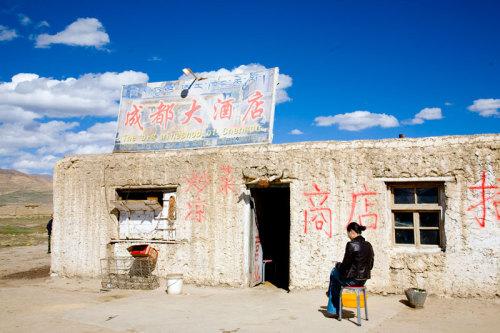
[Photo/Sina blog]
Under the foot of the holy Mt.Kangrinboqe in Nagri Prefecture, northwestern part of Tibet, there are several mud-brick buildings beside a small bus stop, with a visible signboard named "Chengdu Grand Hotel".( Chengdu is the capital city of Sichuan, east to Tibet)
It is called "Grand Hotel", however, its services are the simplest in the world. With an average altitude of 4,500 meters, Ngari has the worst living conditions in Tibet with the most frequent natural disasters.
Faced with severe natural conditions, the "Chengdu Grand Hotel" offers you ordinary dishes, daily necessities and simple accommodation in this sparsely populated land.
The shop owner needs to transport commodities, vegetables and meat from places thousands of kilometers away.
However, for the passing-by driver and travelers, this can be compaired to any other luxury hotels in downtown.
Judging from the name of the hotel, it is must be opened by Sichuanese. Yes, in any difficult place in Tibet, you may always find them. I bet, if you like Sichuan cuisine, you will enjoy Tibet food and you will communicate with locals with no difficulty to speak Sichuan dialect.
Ngari Prefecture, known as the roof of "the Roof of the World", is located in the western part of Tibet, and the center of the Changtang Plateau in the northern part of the Qinghai-Tibet Plateau.
Boasting many noted tourists attractions, such as the Zhada Clay Forest, Mt. Kailashi, the ruins of Guke Kingdom, Nagri is a place of numerous splendid landscapes, centuries-old history and typical culture.
